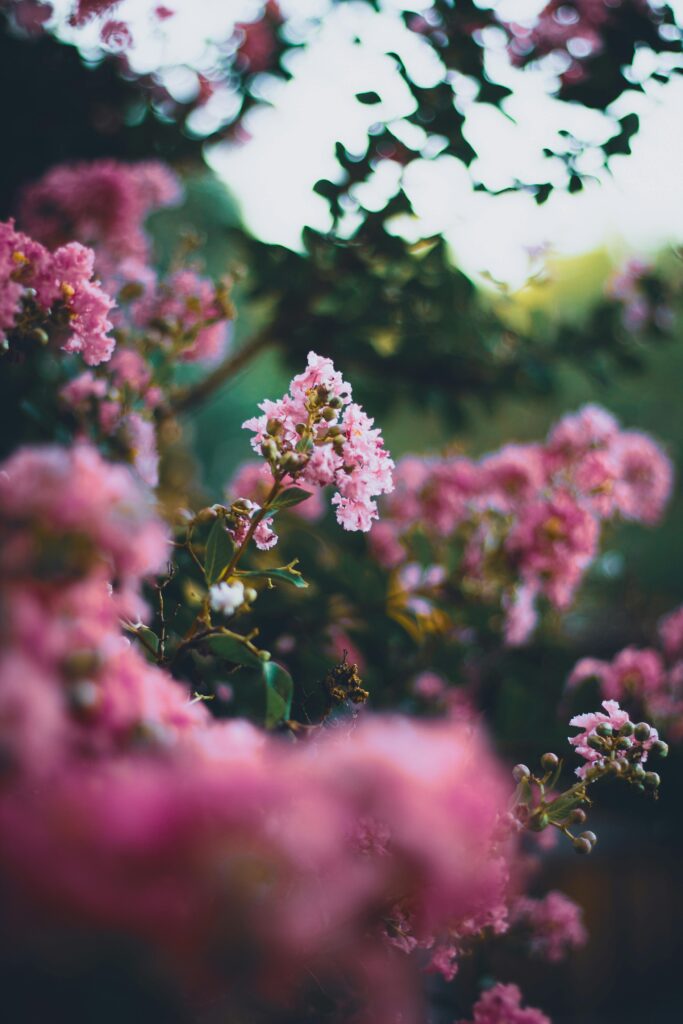
Crape Myrtle (Lagerstroemia) longest blooming seasons
Crape Myrtle (Lagerstroemia) is a genus of about 50 species of trees and shrubs native to Asia, Australia, and Oceania. It has become especially popular in the United States for its ability to thrive in hot climates while providing one of the longest blooming seasons of any ornamental tree.
From midsummer to early fall, crape myrtles burst into bloom with clusters of delicate, crepe-paper-like flowers in shades of white, pink, lavender, red, and purple. The flowers are followed by striking foliage that often turns orange, yellow, or crimson in autumn. In winter, the bark exfoliates, revealing smooth, mottled trunks in shades of tan, gray, and cinnamon.
With such year-round appeal, it’s easy to see why gardeners adore the crape myrtle.
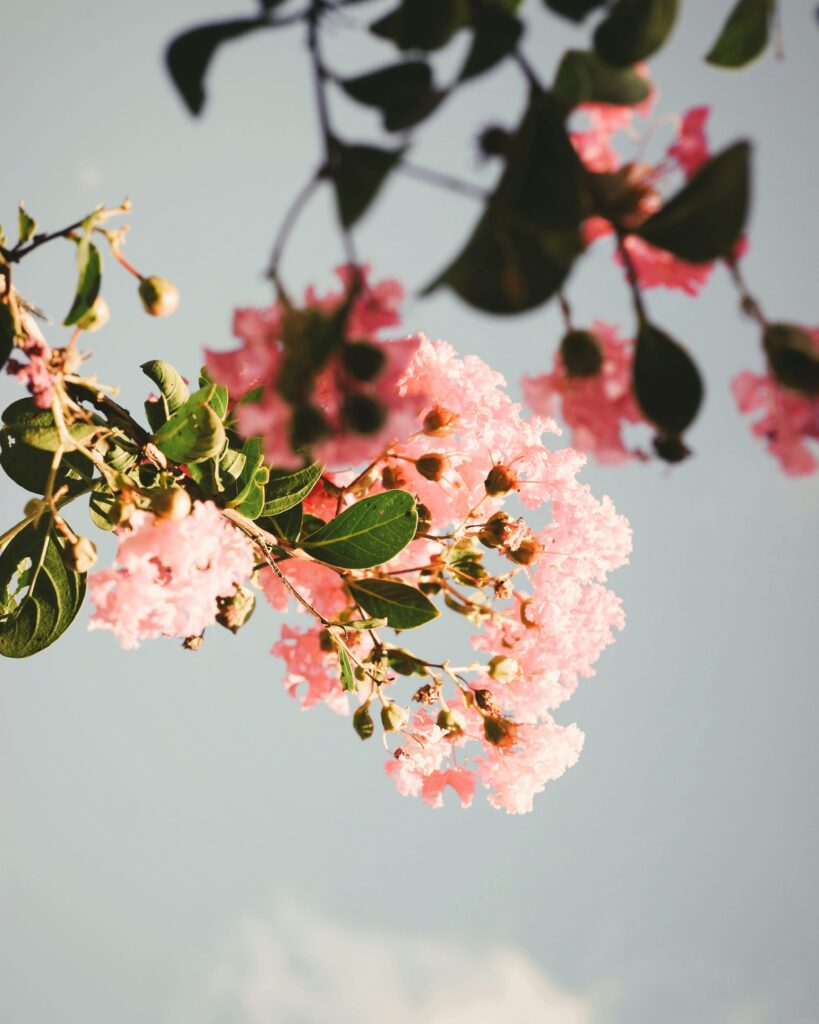
Crape Myrtle
Ideal Growing Conditions for Crape Myrtle
Crape myrtles are tough, but giving them the right environment helps them truly flourish.
- Soil: They adapt to many soils, but well-drained, slightly acidic soil promotes the best flowering. Heavy clay soil should be amended with compost to improve drainage.
- Water: Newly planted trees need consistent watering for the first year. Once established, crape myrtles are drought-tolerant but still appreciate occasional deep watering during long dry spells.
- Sunlight: Full sun is non-negotiable. Without at least 6–8 hours of direct sunlight per day, flowers will be sparse and foliage may look weak.
- Climate: Most varieties thrive in USDA zones 6–10. Cold-hardy types have been developed for northern areas, though extreme winters may still cause dieback.
Choosing the Right Variety
One of the best things about crape myrtles is the wide range of sizes and forms available.
- Dwarf Varieties (2–5 feet): Perfect for pots, borders, or small spaces. Examples include ‘Pokomoke’ and ‘Chickasaw.’
- Medium Shrubs (6–15 feet): Great for hedges, screens, or as specimen plants.
- Tree Forms (15–30 feet): These make bold statement trees in landscapes and provide dappled shade. Popular cultivars include ‘Natchez’ (white flowers, exfoliating bark) and ‘Dynamite’ (red blooms).
Before planting, consider your available space—planting a tall variety in a small garden can cause future headaches.
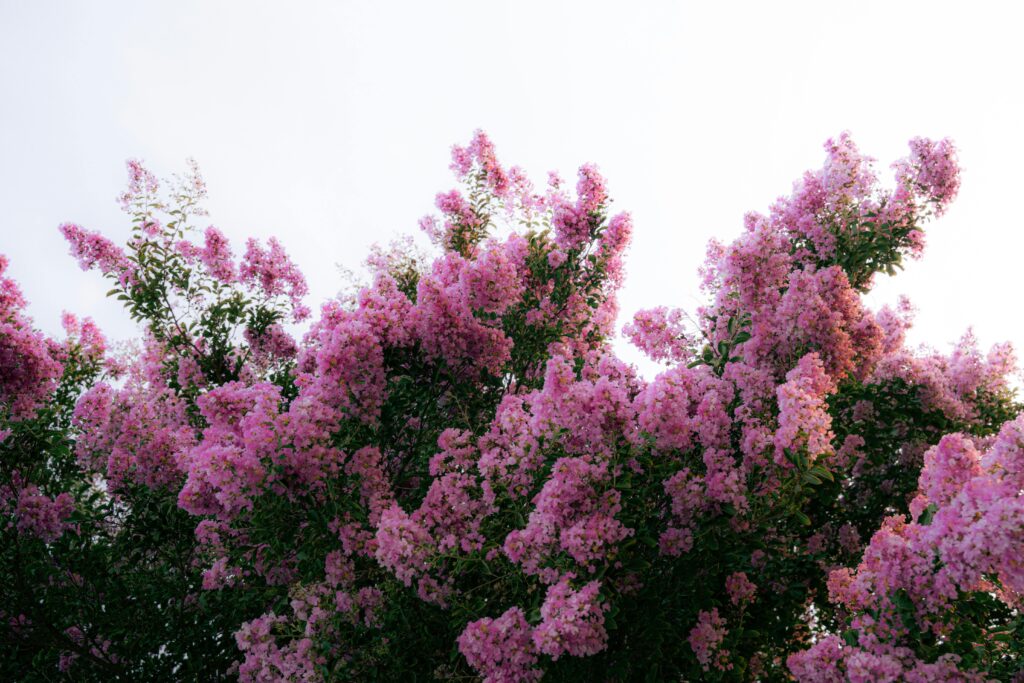
How to Plant Crape Myrtle
Planting correctly sets your crape myrtle up for decades of beauty.
- Pick the Spot: Choose a sunny, open location with room for the mature size of your variety.
- Prepare the Soil: Loosen the soil and, if needed, add organic matter to improve drainage and fertility.
- Dig the Hole: Make it twice as wide as the root ball but no deeper. Planting too deep can suffocate roots.
- Place the Tree: Set the crape myrtle in the hole with the root flare (where trunk meets roots) at soil level.
- Backfill & Water: Refill the hole, gently tamp down, and water thoroughly to remove air pockets.
- Mulch: Add a 2–3 inch mulch layer around the base, keeping it away from the trunk to prevent rot.
Daily Care Tips for Crape Myrtle
Once planted, crape myrtles are fairly low-maintenance. Still, a little regular care goes a long way.
- Watering: Water young trees weekly during the first growing season. Mature plants only need water during extended droughts.
- Fertilizer: Apply a balanced, slow-release fertilizer in spring before new growth emerges. Avoid over-fertilizing, which produces leaves at the expense of flowers.
- Mulching: Refresh mulch each year to help conserve moisture and regulate soil temperature.
- Weeding: Keep the base of the tree weed-free to prevent competition for nutrients.
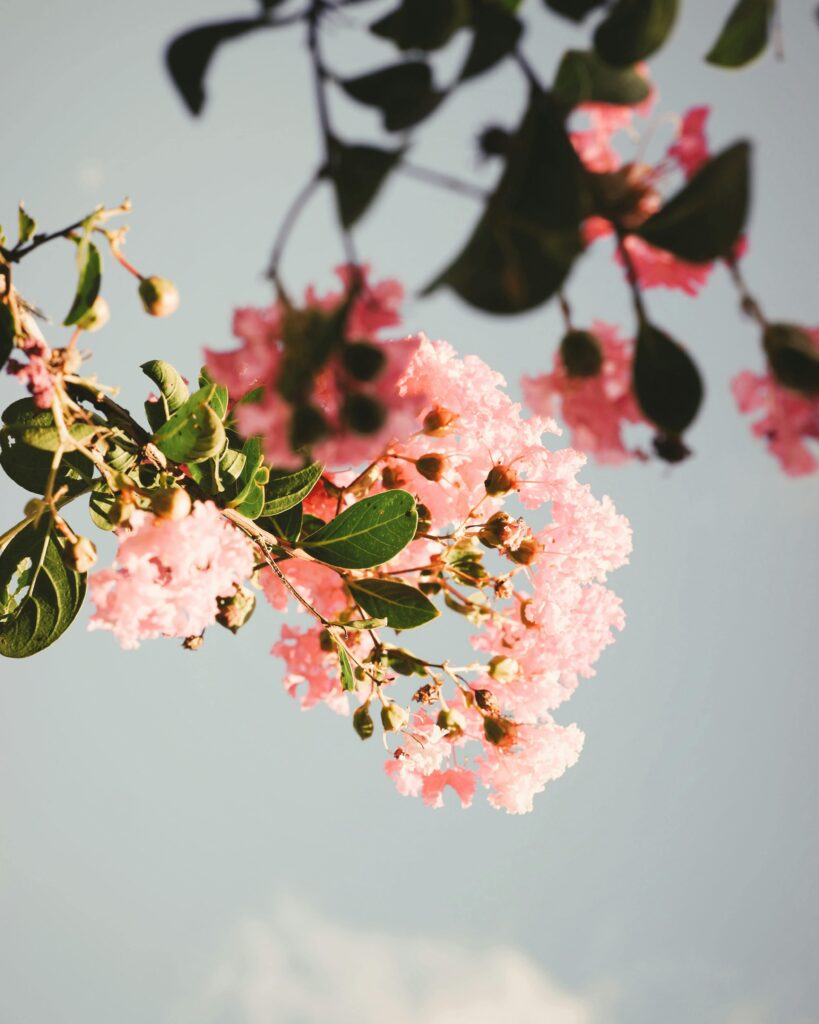
Pruning and Maintenance
Pruning is often misunderstood with crape myrtles. Unfortunately, many gardeners commit what’s called “crape murder”—cutting large branches back to stubs each year. While this forces new shoots, it ruins the tree’s natural shape and weakens its structure.
Instead, follow these tips:
- Timing: Prune in late winter or very early spring, before new growth begins.
- What to Remove: Cut away dead branches, crossing limbs, and suckers at the base.
- Shaping: Lightly thin the canopy if needed for better airflow and more sunlight penetration.
- Flowering Tip: You can remove spent flower clusters in midsummer to encourage a second round of blooms.
Handled correctly, pruning enhances rather than disfigures the tree.
Common Pests and Problems
Crape myrtles are generally hardy, but you may encounter a few issues:
- Powdery Mildew: Appears as a white coating on leaves, especially in shady, humid spots. Plant mildew-resistant varieties and ensure proper airflow.
- Aphids: These small insects suck sap from leaves, often leaving sticky honeydew. Control with insecticidal soap, neem oil, or by encouraging ladybugs.
- Sooty Mold: This black fungus grows on honeydew left by aphids. Treating the aphids usually resolves the mold.
- Bark Scale: A newer pest in some regions, visible as white, waxy clusters on bark. Scrape off lightly and use horticultural oil if infestations worsen.
Expert Tips for Growing Crape Myrtle Successfully
- Choose Wisely: Match the variety to your space—dwarfs for small gardens, large trees for open landscapes.
- Sun = Flowers: Plant in full sun to maximize blooming and minimize mildew.
- Plant in Groups: Multiple crape myrtles can create a striking avenue or border.
- Enjoy the Bark: Allow the bark to peel naturally—it’s one of the plant’s most ornamental features.
- Patience Pays: Young crape myrtles may take a couple of years to bloom fully, but they reward patience with decades of beauty.
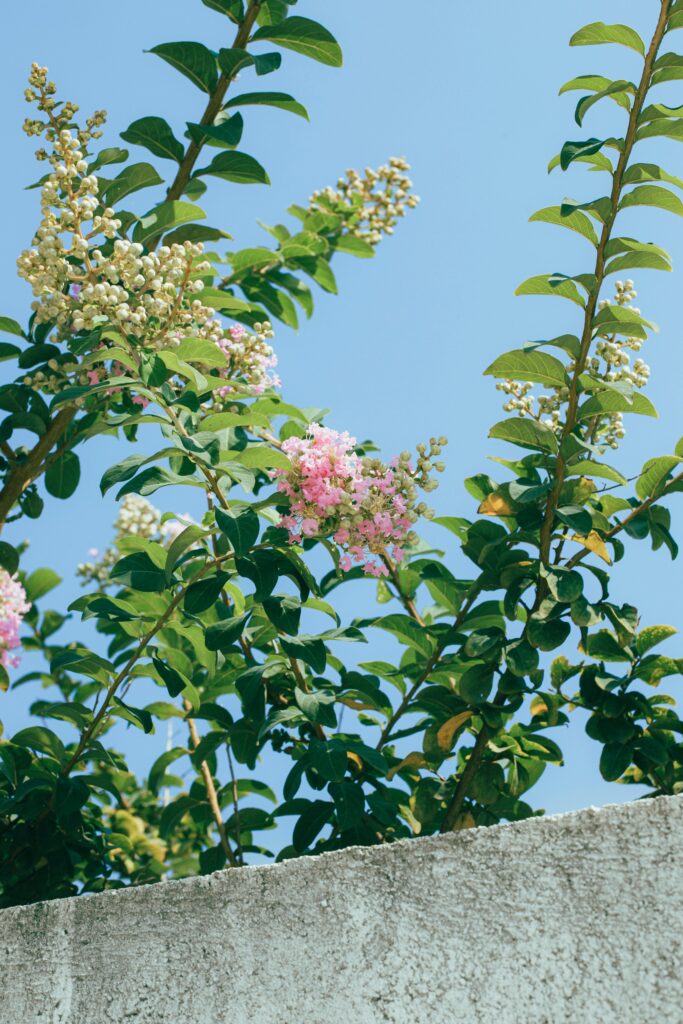
Frequently Asked Questions About Crape Myrtle
1. When is the best time to plant a crape myrtle?
Spring and fall are ideal, as cooler temperatures reduce transplant stress.
2. How often should I water a crape myrtle?
Weekly during the first year, then only during prolonged drought once established.
3. Do crape myrtles lose their leaves in winter?
Yes, they are deciduous, dropping leaves in fall after a display of colorful foliage.
4. Why isn’t my crape myrtle flowering?
The main causes are too little sunlight, excessive nitrogen fertilizer, or improper pruning.
5. Should I cut back my crape myrtle every year?
No—avoid heavy topping. Instead, prune lightly in late winter to maintain health and shape.
Conclusion: A Tree for All Seasons
The Crape Myrtle truly earns its reputation as one of the most rewarding ornamental trees. From summer’s brilliant flowers to autumn’s fiery foliage, winter’s peeling bark, and spring’s fresh growth, it offers something to enjoy in every season.
By choosing the right variety, planting it carefully, and giving it simple, steady care, you’ll have a tree that can thrive for generations. If you’re dreaming of a garden centerpiece that combines resilience with beauty, the crape myrtle may be the perfect fit.
So why not plant one this season? Watch as it transforms your garden into a vibrant showcase, year after year.



